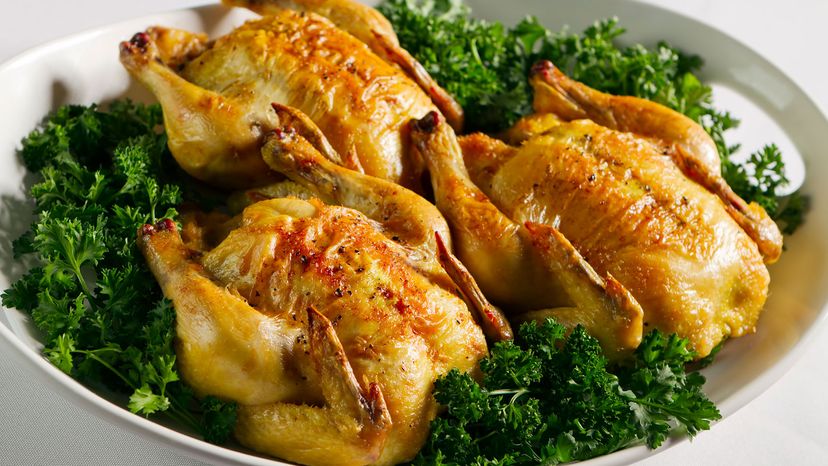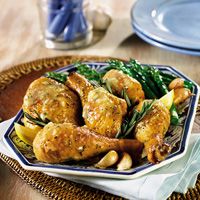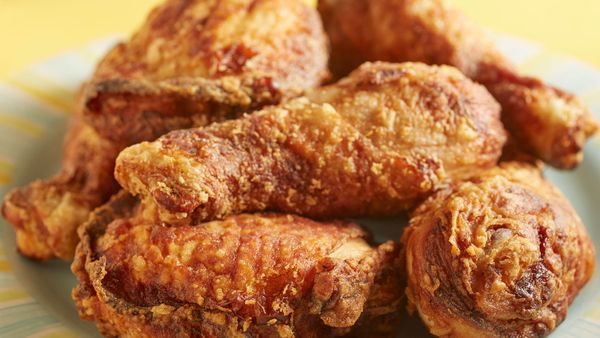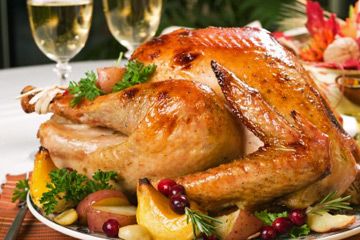
You may have seen them in fine-dining restaurants — cute, little hens served up one per plate. These tiny members of the poultry family are called Cornish game hens. But the name is a bit of a misnomer, because they're neither Cornish nor game birds. They're just little chickens.
While no one can say with certainty how Cornish game hens came into being, credit for creating the new breed is given to Alphonsine "Therese" Makowsky. Makowsky and her husband were living in Connecticut in 1949 when a fire killed the African guinea hens they were raising and selling. Afterward, Makowsky decided to try cross-breeding various chicken and game birds, and ended up creating the Cornish game hen, a combination of Cornish and White Plymouth Rock chickens. The new breed quickly became a hit.
Advertisement
For the most part, Cornish game hens are just like any other chicken. But there are some differences. According to the U.S. Department of Agriculture (USDA), which sets poultry classifications, Cornish game hens (aka Rock Cornish game hens) are chickens less than 5 weeks old with a ready-to-cook carcass weight of 2 pounds (1 kilogram) or less. The chickens may be of either sex.
Since the birds are younger and smaller than the regular chickens most of us buy — which typically weigh about 4 or 5 pounds (1.8 or 2.2 kilograms) and are about 8 weeks old — Cornish game hens are extra tender. That allows their meat to better absorb flavors from spices and marinades.
Cornish game hens also have thinner skin than regular chickens. This means their skin is easier to tear, so when preparing them you need to handle with care. Any stuffing must be kept to a minimum, too, or the skin could burst while in the oven.
Restaurateurs often enjoy working with Cornish game hens because, due to their pint size, they can serve an entire hen to one diner, creating a unique, visually appealing entree. The only downside to Cornish game hens is that they're pricier than regular chickens, whether you're purchasing them in a grocery store or at a restaurant.
In the mid-1960s, Tyson Foods began selling Cornish game hens. Today, the poultry titan is the leading U.S. producer, selling about two-thirds of all of the Cornish game hens produced in the U.S. And people around the globe enjoy them, too.
Advertisement


